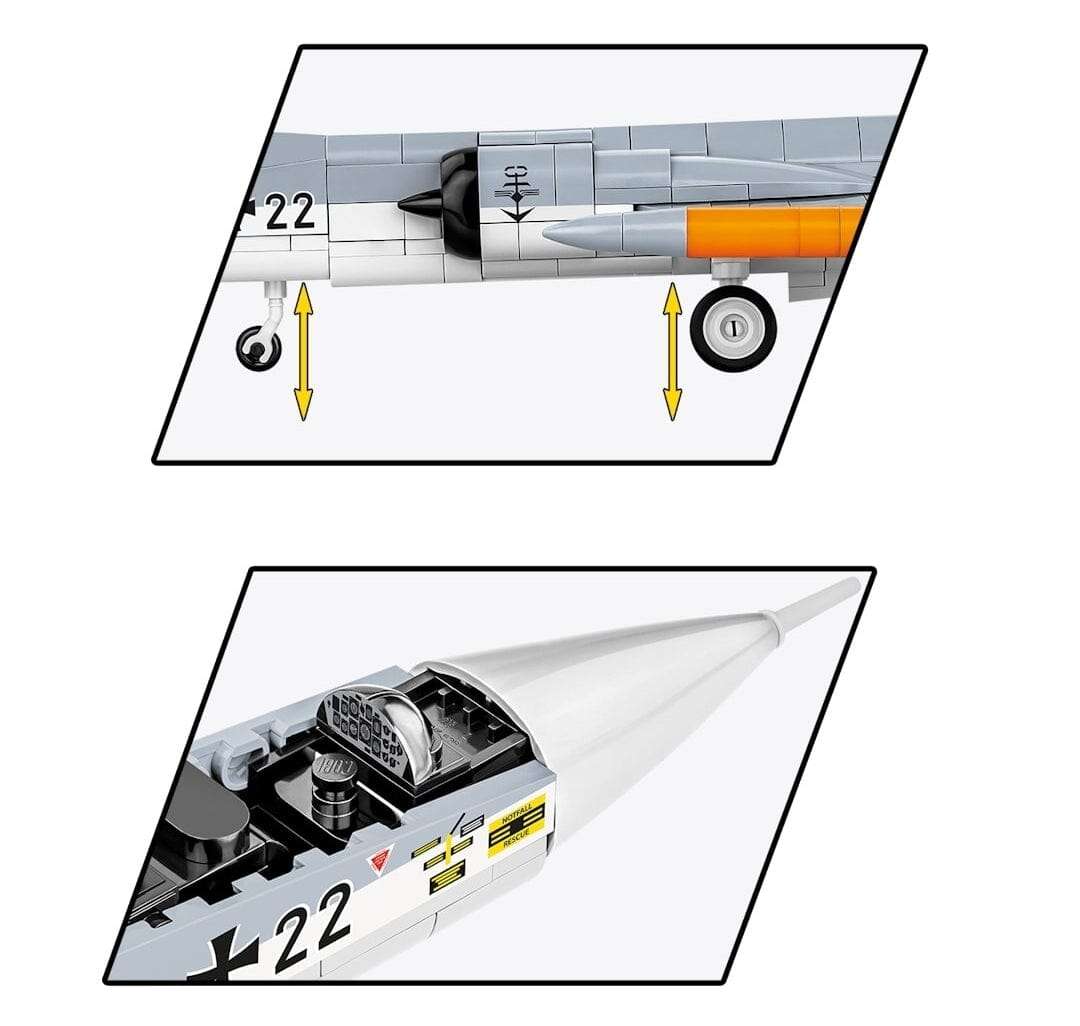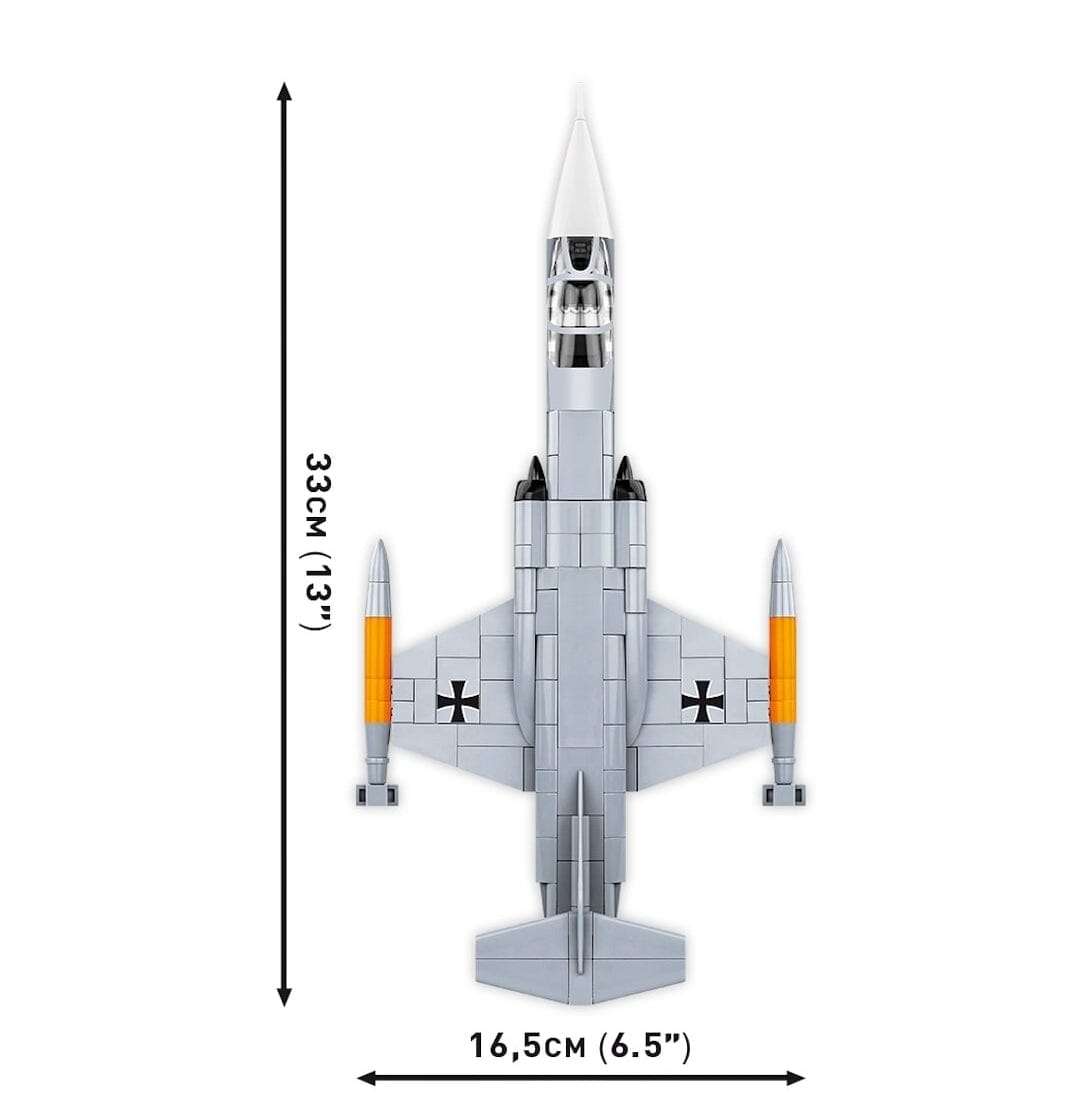
Model of the Month: The missile with a man in it
Before I launch into the model of the month feature, a quick note to say that our COBI delivery which includes all the pre-ordered Flying Scotsman sets of which we have two unsold sets remaining, is due for delivery on Monday. It was supposed to be today (Friday) but due to driver illness it has been delayed. Our apologies if you were hoping for the Scotsman to arrive in time for the weekend.
Warmest wishes,
Zoë
PS. Click on the pre-order collection button below for the latest COBI kit pre-orders added this week.
Warmest wishes,
Zoë
PS. Click on the pre-order collection button below for the latest COBI kit pre-orders added this week.
Lockheed F-104 Starfighter
With razor-sharp wings and rocket-like speed, the Lockheed F-104 Starfighter looked like it belonged in space, not on Earth. Nicknamed “The Missile with a Man in It,” this Cold War-era interceptor remains one of the most iconic and controversial jets in aviation history.
“It was unforgiving, but exhilarating… you had to respect it,”
— German Luftwaffe pilot, Capt. Klaus-Peter Reuter
FAST FACTS
First flight: 1954
Top speed: Mach 2.0 (1,328 mph)
Service ceiling: Over 90,000 feet
Role: Interceptor, Fighter-Bomber
No. built: 2,578, serving in 15 different air forces.
Final Retirement: 2004 (Italy)
From Skunk Works to Supersonic
Developed in the early 1950s by Lockheed’s Skunk Works team under the legendary Kelly Johnson, the F-104 was a response to U.S. pilots in Korea asking for "more speed." The result? A supersonic interceptor with an incredibly thin fuselage, tiny wings, and blistering speed.
“We wanted something that could outfly anything. The Starfighter did just that—fast, high, and lethal.”
– Lockheed test pilot Tony LeVier
Taking to the skies in 1954, the F-104 became the first aircraft to simultaneously hold world records for both speed—1,404 mph—and altitude—91,249 feet. Capable of reaching Mach 2.0 and climbing like a rocket, it was armed with a 20mm Vulcan cannon and a range of air-to-air missiles. Notably, the F-104 was also the first aircraft to achieve twice the speed of sound in level flight.
.

Troubled Legacy
Despite its futuristic design, the F-104 had a troubled service record. Originally intended as a high-speed interceptor, it was pressed into multi-role service—particularly by NATO allies including Germany, Italy, Canada, and Belgium. In these roles, it proved unforgiving.
“It was like strapping yourself to a rocket,”
— Retired USAF pilot, Col. Charles E. Myers
In the 1950s a F-104A cost around $1.4 million USD per aircraft which equates to roughly $15–16 million in today's money. Later variants (F-104G, F-104S for NATO countries) costs increased with more advanced avionics and multirole capability, reaching around $2 million per unit by the 1960s-70s. Some NATO allies, like Germany, spent billions collectively acquiring and operating large fleets of Starfighters.
Despite the significant investment, Germany alone lost nearly 300 of its 900 Starfighters, earning it the grim nickname “Widowmaker.” Much of this was due to using the aircraft in ground-attack roles for which it wasn’t designed, as well as high training demands.
Despite the significant investment, Germany alone lost nearly 300 of its 900 Starfighters, earning it the grim nickname “Widowmaker.” Much of this was due to using the aircraft in ground-attack roles for which it wasn’t designed, as well as high training demands.
International Fame
Despite the controversy, the F-104 enjoyed a long and widespread career. It served in the air forces of 15 countries, and Italy continued flying upgraded versions well into the 2000s. Its needle-nose design and sheer speed earned it admiration in the aviation community.
In the U.S., it was replaced relatively early by more capable aircraft like the F-4 Phantom II, but it lived on abroad. It was also used by NASA as a chase and research aircraft due to its ability to reach extreme altitudes.

Enduring Icon
Today, the Starfighter remains a favourite among aviation enthusiasts. Several are preserved in museums, including the Royal Air Force Museum Cosford with a F-104G Starfighter (Luftwaffe) and Imperial War Museum Duxford displays a F-104G in NATO markings.
The F-104 Starfighter was a thrilling chapter in aviation history—feared, admired, and unforgettable. Its legacy is a sharp reminder of the balance between cutting-edge innovation and the unforgiving realities of high-performance flight.
COBI Lockheed F-104 Starfighter brick plane models
COBI is releasing two versions of the F-104 Starfigher model - Luftwaffe and Vietnam War. Both are due for release in mid-August.


Check out the 17 minute video below for a more indepth overview of the history of this troublesome, unique aircraft. Although, I would skip to 1:14 unless you wish to watch an advert for a hair loss treatment.
 Skip to content
Skip to content

